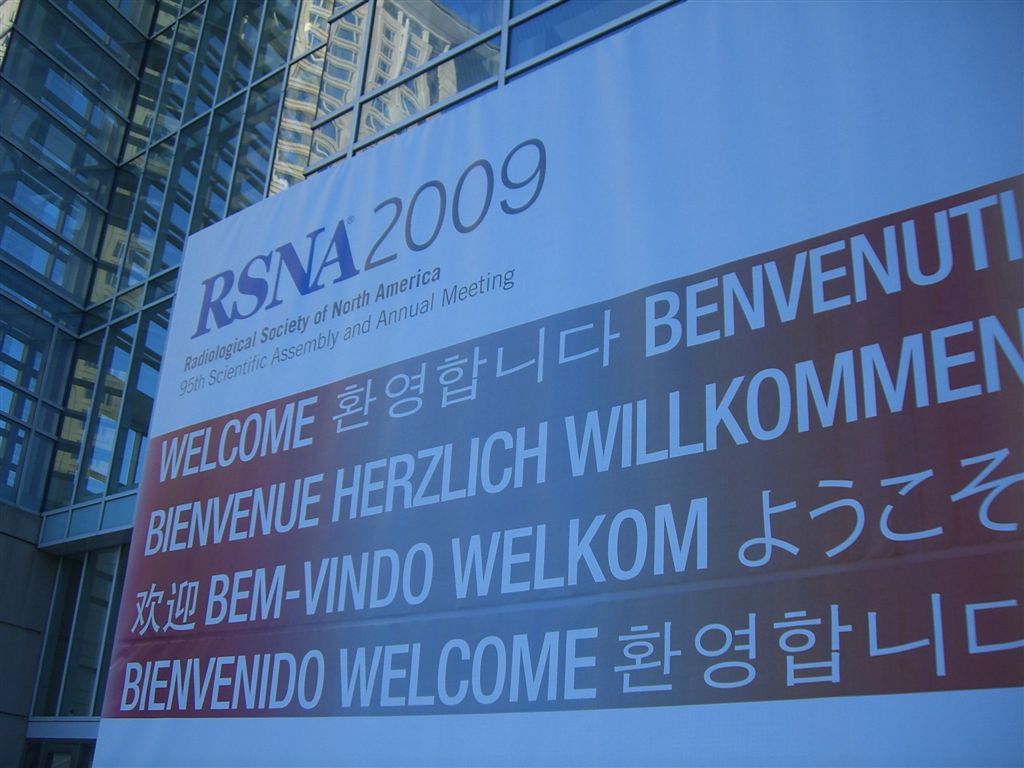Will Europe and Asia eventually take over at the RSNA meeting?
The RSNA’s supremely well-oiled, amply resourced bureaucratic machine spewed out the audited attendance figures this week for its 2009 congress, and they are definitely worth a second look.
The RSNA’s supremely well-oiled, amply resourced bureaucratic machine spewed out the audited attendance figures this week for its 2009 congress, and they are definitely worth a second look.
The massive drop predicted by some doom merchants did not materialize, but the economic crisis clearly had a significant impact, and attendance appears to have peaked. A total of 56,824 people went to the 2009 meeting, which represents 4% less than in 2008.
The official view is that the modest decline was largely due to cutbacks in the number of exhibitor and support personnel, but there were also fewer professional delegates: 26,262, compared with 27,586 in 2008.

Just over 60% of professionals came from North America. The U.S. accounted for 14,376, Canada 1128, and Mexico 307. But they may soon be outnumbered by their international colleagues. No fewer than 877 professionals came from France, 771 from Italy, 747 from Japan, 693 from the U.K., 684 from Germany, 553 from China, 443 from Brazil, 423 from Spain, and 379 from the Netherlands.
These statistics underline the enduring global appeal of the RSNA meeting. Giving an oral presentation, or winning a coveted rosette for a scientific exhibit, brings great prestige, to both individuals and their institutions. Many leading European and Asia Pacific research teams aggressively target the congress and structure their annual schedules with the late November start date in mind.
For delegates looking to check out the latest equipment, the exhibition hall at McCormick Place is a must because it provides a rare chance to see the latest MRI and CT systems in action. Most other conference venues lack the necessary size for these units, and in harsh economic times, some vendors appear to be concentrating their marketing efforts on Chicago.
Furthermore, the personal and social benefits of RSNA attendance should not be underestimated. La Société Française de Radiologie (SFR) always puts on a lavish industry-sponsored evening reception on Sunday, and the event has a reputation for excellent food and wine. Other national societies do the same, providing a chance to meet friends and find out about potential jobs.
Admittedly Philips Healthcare cancelled its traditional event at the Art Institute last year, and gone are the days when Bracco would put on a Blues Brothers gig at the House of Blues, but the networking opportunities remain numerous. The shops and restaurants on the Magnificent Mile are also attractive to those coming from countries with strong currencies and high domestic sales tax rates.
So Chicago’s chill wind continues to prove irresistible to overseas doctors, but will Europeans and Asians take over at RSNA? Not imminently, of course, but, interestingly, the president of this year’s congress, Dr. Hedvig Hricak, from Memorial Sloan-Kettering Cancer Center in New York, is Croatian-born. She did her medical and radiology training in Zagreb before coming to the U.S. in 1972, and is very well known in Europe.
GE HealthCare Debuts AI-Powered Cardiac CT Device at ACC Conference
April 1st 2025Featuring enhanced low-dose image quality with motion-free images, the Revolution Vibe CT system reportedly facilitates improved diagnostic clarity for patients with conditions ranging from in-stent restenosis to atrial fibrillation.
The Reading Room Podcast: Current Perspectives on the Updated Appropriate Use Criteria for Brain PET
March 18th 2025In a new podcast, Satoshi Minoshima, M.D., Ph.D., and James Williams, Ph.D., share their insights on the recently updated appropriate use criteria for amyloid PET and tau PET in patients with mild cognitive impairment.